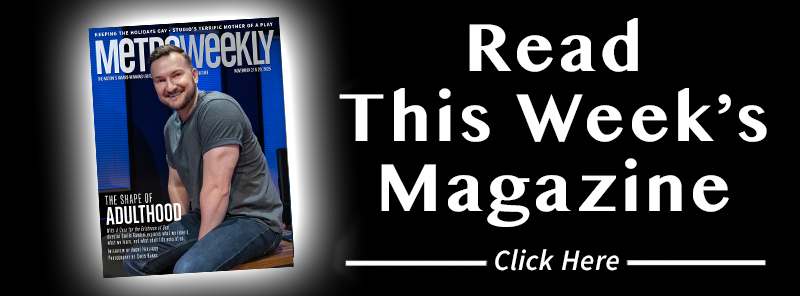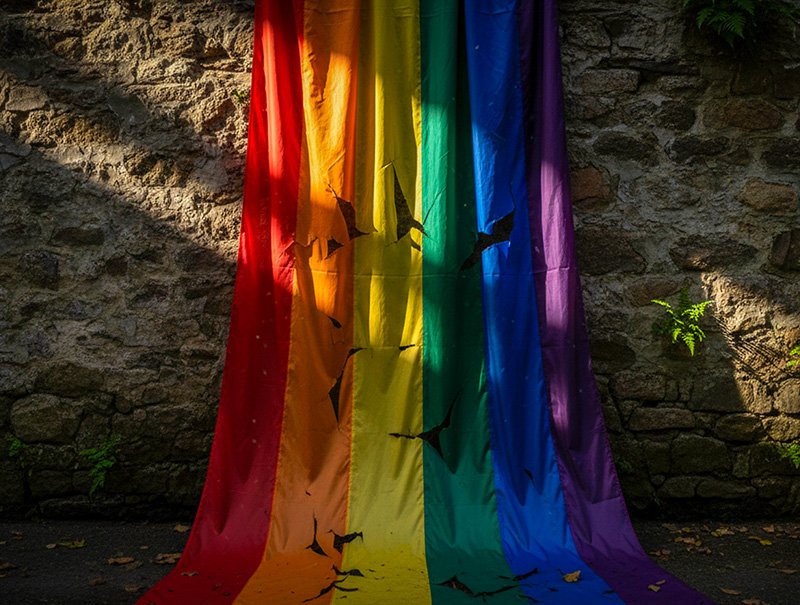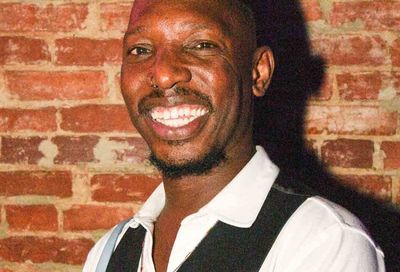Two-thirds of voters of color, including LGBTQ people of color, plan to vote early or by mail
Survey and focus groups reveal support for mail-in voting, but high levels of skepticism surrounding its effectiveness

Voters of color, including LGBTQ people of color, overwhelmingly favor allowing mail-in voting as an option amid the COVID-19 pandemic.
Almost half of them, or 48%, say they intend to cast their vote that way, with another 20% saying they’ll take advantage of early voting in states that offer it, according to research from a group of civil and voting rights organizations.
The Human Rights Campaign Foundation, the educational arm of America’s largest LGTBQ organization, and HIT Strategies, in partnership with Latino Victory Foundation, the NAACP, UnidosUS, and Woke Vote, have released the first result of a national survey of voters of color that measures support for vote by mail ahead of an election where millions more voters are expected to vote via mail-in (also known as absentee) ballots.
The survey, conducted between June 29-July 10, consisted of 800 non-white voters, of varying political viewpoints, with a 200 person oversample each of African American, Latinx, Asian American/Pacific Islander, and LGBTQ voters of color.
Researchers also held four focus groups that examined attitudes towards mail-in voting among each demographic group, as well as barriers to mail-in voting and the most convincing arguments for why people should exercise mail-in voting as an option for this year’s election.
Key takeaways from the survey found that more than three-quarters of people of color voters think that the COVID-19 pandemic will affect who votes in the 2020 election, and 73% believe the protests following the police-involved killing of George Floyd will affect who votes this year.
Eighty percent of voters of color believe that mail-in voting should be made available as an option for voters amid the pandemic, with two-thirds, or 68% of voters of color indicated that they intend to utilize either in-person early voting or mail-in voting to cast their ballots.
Additionally, three-quarters of people of color, including nearly 4 out of 5 LGBTQ voters of color say they are more likely to vote by mail this year if a cure or vaccine for coronavirus isn’t discovered by November.
However, people of color and LGBTQ people of color express a great deal of uncertainty around mail-in voting, including how to properly cast a ballot, and skepticism related to whether their vote will ultimately be counted.
For instance, 44% of respondents said they were either “not too confident” or “not at all confident” that this year’s election would be conducted fairly and accurately.
That skepticism is particularly acute in a number of battleground states, most of which have histories of restricting the right to vote to marginalized populations.
“Voters of color possess a justifiable cynicism towards the election system. And that cynicism certainly extends to the vote-by-mail voting system,” Terrance Woodbury, pollster and founding partner of HIT Strategies, said in a presentation and panel discussion about its results.
“This has been charge of this research: to cut through the cynicism and discover methods and messages that increase the confidence and likelihood of voters of color to vote by mail.”
According to Woodbury, messages that resonate with people of color include promoting mail-in voting as a safe and secure method of voting — something that is crucial amid a pandemic — as well as demonstrating how mail-in voting has increased participation among underrepresented communities and reduced instances of fraud in states like Washington, Oregon, and Colorado, which conduct vote-by-mail elections.
When promoting mail-in voting, including locations, statistics and dates that can be confirmed or fact-checked by listeners further increases confidence in the system.
“We should avoid discussing vote by mail as being more convenient. There’s a nuanced, but important, difference between convenience and accessibility,” Woodbury said. “And we should avoid discussing vote by mail as a community or social event.
“While our voters did cite voting as something that should be done with children to demonstrate civic responsibility, voting is otherwise perceived as a private or personal experience.”
See also: Biden campaign targets LGBTQ voters with “Out for Biden” initiative
In terms of barriers to voting, voters surveyed said they would be much less likely to vote by mail if the process required finding a witness or notary public to sign the envelope, turning over a ballot to someone, even a representative of a respected community organization, who takes it to a ballot collection center, or if postage was required to submit a ballot, but was not prepaid in advance.
As such, groups that wish to encourage voting by mail will have to engage in a significant education campaign to inform voters how to cast a ballot. This is especially true for younger voters, who may be less familiar with purchasing postage and utilizing the postal system.
Voters of color, LGBTQ people of color, and younger voters are also more likely to be influenced by testimonials from people from their communities that have already voted by mail and can testify to its efficacy in a convincing, realistic way.
“This process must include how to request a ballot, purchasing postage, and tracking your ballot. In any states that provide ballot tracking, this is one of the most effective ways of cutting through cynicism,” Woodbury said. “They don’t have to trust the mailman. They don’t have to trust the post office. It is literally their responsibility and their right to track their ballot.
“We have to emphasize with young voters how and where and how much it costs to purchase postage. We should use testimonials of people from the target communities that have already voted by mail to describe the benefits of vote by mail: that it’s safer during COVID, that it’s an easy process, and that you can avoid work conflicts and avoid lines. And finally, we should show images of ballots, postage and websites that provide mailing services. Just showing [voters] images makes the process more familiar and more accessible.”
Because many voters of color, and LGBTQ voters of color, are voting by mail for the first time, HIT Strategies and the HRC Foundation will continue tracking attitudes among key groups towards mail-in voting every month until Election Day.
Alphonso David, president of the Human Rights Campaign, noted that a great deal of misinformation around mail-in voting has been circulated, with President Trump — and those loyal to him — intentionally disparaging vote-by-mail or deliberately misleading people by claiming it is somehow different from absentee voting, and is rife with fraud.
“There are many other organizations that are doing work on the ground that are communicating with specifically communities of color,” David said. “I wanted to make sure that this information is publicly available to all of those organizations.
“I also have to make an additional point that often goes overlooked: members of the transgender community are facing significant hurdles in voting. We see this, and we’ve seen this year after year after year with very strict voter I.D. laws that in some cases are being enforced in a very onerous and in some cases unconstitutional way,” he added.
“We need to make sure that we’re providing information to people so that they can exercise their constitutional right to vote. We all have the right to vote. But unfortunately, there’s so much misinformation that I want to make sure this that the facts are actually provided to the organizations doing work on the ground.”
Part of promoting mail-in voting as a way to cast one’s vote safely and ahead of Election Day also requires changing the culture around voting and people’s regular habits, Ben Needham, HRC’s director of strategic initiatives, told Metro Weekly in a follow-up interview.
“There’s a sense of showing up on Election Day and doing your duty to vote” in communities of color and other marginalized populations, notes Needham. “There’s a little bit of just educating ourselves around all voting options that hasn’t necessarily happened with marginalized communities.”
Needham added: “The research tells us through our focus groups that people just believe that voting on Election Day is easier than having to figure out where to go online to request the ballot, making sure that you showed up at requests correctly, waiting on the mail for the ballot, making sure you filled out their ballot correctly, figuring where you are going to drop it off to get it back to election officials and then worrying that your ballot is counted.
“Now, the truth of the matter is that people have been voting absentee and vote by mail for a number of years. There is no voter fraud around vote by mail in absentee voting.
“But the history and the research shows us that marginalized voters, and especially LGBTQ voters and voters of color just are more comfortable showing up and doing this on first early voting or on Election Day out of a sense of duty and out of a sense of tradition. And that’s just something that we have to change when you’re starting to talk about changing the culture around voting.”
Read more:
Kansas GOP nominates anti-LGBTQ congressman for Senate; LGBTQ candidates win primaries
Salt Lake City high school publishes anti-transgender quote in yearbook
Trump appointee who called U.S. a “homo-empire” departs USAID
Support Metro Weekly’s Journalism
These are challenging times for news organizations. And yet it’s crucial we stay active and provide vital resources and information to both our local readers and the world. So won’t you please take a moment and consider supporting Metro Weekly with a membership? For as little as $5 a month, you can help ensure Metro Weekly magazine and MetroWeekly.com remain free, viable resources as we provide the best, most diverse, culturally-resonant LGBTQ coverage in both the D.C. region and around the world. Memberships come with exclusive perks and discounts, your own personal digital delivery of each week’s magazine (and an archive), access to our Member's Lounge when it launches this fall, and exclusive members-only items like Metro Weekly Membership Mugs and Tote Bags! Check out all our membership levels here and please join us today!


























You must be logged in to post a comment.